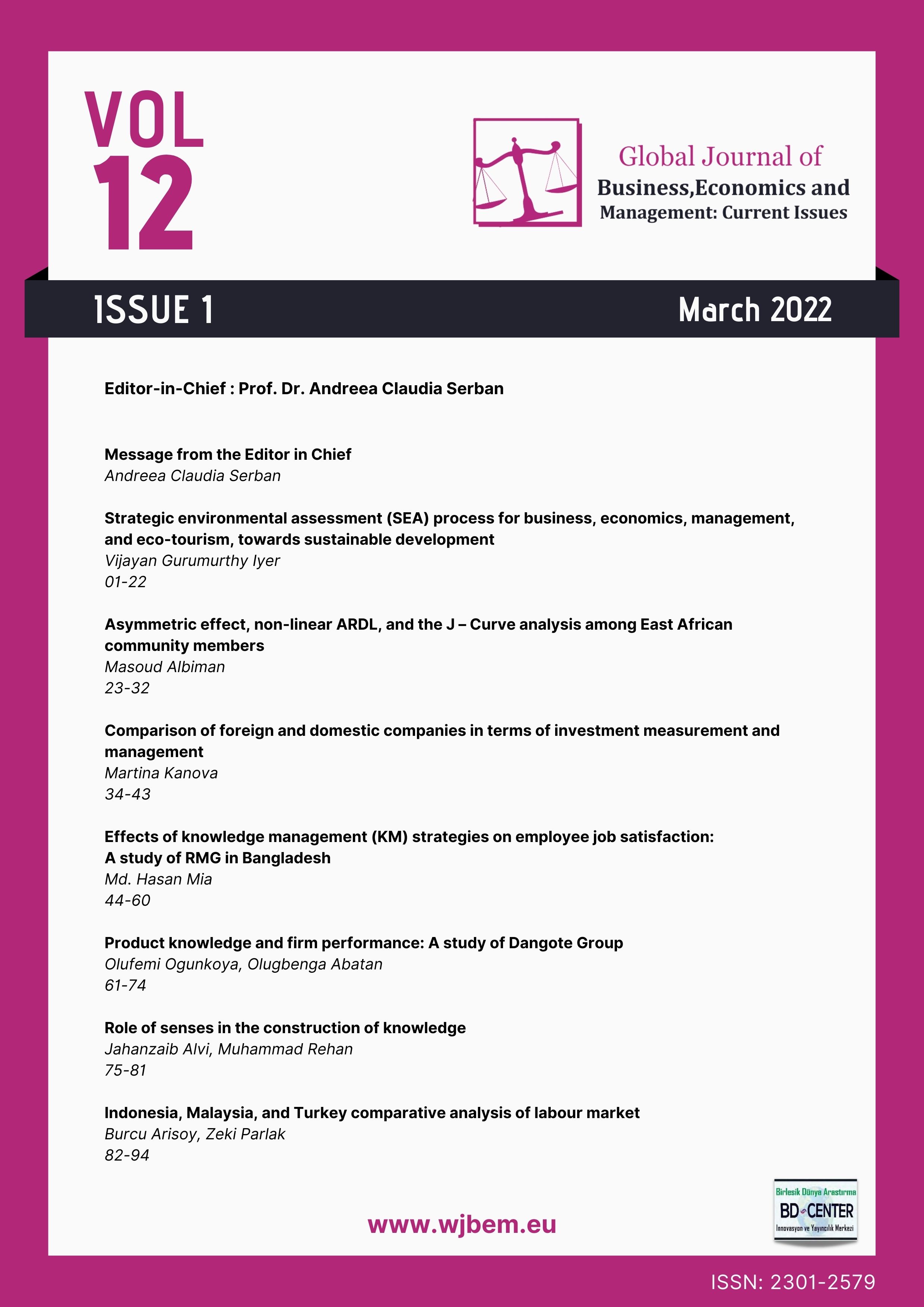Asymmetric effect, non-linear ARDL, and the J – Curve analysis among East African community members
Main Article Content
Abstract
When a country’s balance of trade persistently records deficits, the most important policy is to devalue the exchange rate. This article aims to explore the symmetric effect of the exchange rate and its transmission channels on the trade balance. The recently developed method of Non-linear Autoregressive Distributed Lag (ARDL) was utilized for Quarterly data from 1990 Q1 to 2019 Q4 in unexplored areas of East African Community (EAC -5) members. The study found the presence of robust symmetric and asymmetric negative effects of exchange rate changes on trade balance only in Uganda, both in the short-run and long-run. Meanwhile, there was no evidence of robust J-curve phenomena within EAC members. Generally, the application of exchange rate policy in improving trade imbalance is doubted within the EAC region.
Keywords: EAC; Exchange rate; J –curve; nonlinear ARDL.
Downloads
Article Details

This work is licensed under a Creative Commons Attribution 4.0 International License.
The Global Journal of Business Economics and Management: Current Issues is an open-access journal. The copyright holder is the author or authors. Licensee: Birlesik Dunya Yenilik Arastirma ve Yayincilik Merkezi, North Nicosia, Cyprus. All articles can be downloaded free of charge. Articles published in the Journal are Open-Access articles distributed under the CC-BY license [Attribution 4.0 International (CC BY 4.0)].

